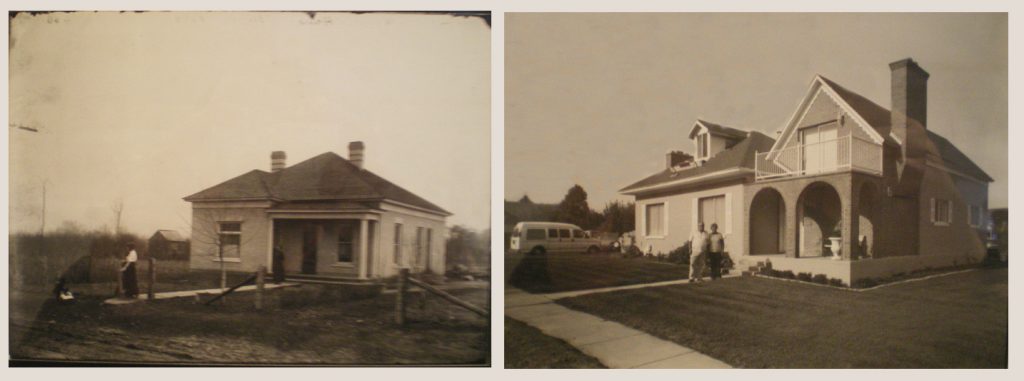Exhibit documents change of early homes in Central Utah
The Russian-born American poet and writer Joseph Brodsky wrote, “No matter under what circumstances you leave it, home does not cease to be home. No matter how you lived there—well or poorly.” An exhibit of photographs at USU Eastern’s Gallery East seeks to illustrate the dichotomies of persistence and change in Utah homes over time.

This archived article was written by: Noel Carmack
The Russian-born American poet and writer Joseph Brodsky wrote, “No matter under what circumstances you leave it, home does not cease to be home. No matter how you lived there—well or poorly.” An exhibit of photographs at USU Eastern’s Gallery East seeks to illustrate the dichotomies of persistence and change in Utah homes over time.
Photographer George Edward Anderson traveled throughout Central Utah during the late 19th and early 20th centuries. During his travels he shot portraits of families outside their homes and also took general “environmental portraits.” Architectural Historian Peter Goss has returned to many of those places and re-photographed them. His exhibit of both the original and contemporary photographs in central Utah (Utah, Sanpete, and Emery counties) provides a look at change and continuity over the last century.
The exhibit is based on researching the extensive collection of Anderson’s negatives in the L. Tom Perry Special Collections at BYU. Once the existing sites were identified, they were re-photographed using a large format (5” X 7”) wooden filed camera, not unlike the type of camera used by Anderson.
The concept of re-photography,” Goss explains, “is an accepted practice among documentary photographers and usually results in pairs of photographs (original and contemporary). These pairs may be considered from a number of viewpoints such as the effects of time and change.” The exhibit features 16 pairs of pairs of photographs—each showing a contact print of Anderson’s negative and a contact print of Goss’s re-photograph on the right. “
According to Goss, Anderson’s photographs illustrate various stages in the lives of individuals, couples and families on the streets, in their places of business, and in their homes and apartments. “As an architectural historian and documentary photographer, I find Anderson’s ‘environmental portraits’ important architecturally and culturally and, as seen in this exhibition, some examples appear to be little changed, while others have received varying degrees of modification to suit different fashions and lifestyles over the intervening 90-100 years.”
Goss’s re-photography project was financially supported by a creative research grant from the University of Utah’s Research Committee and the Utah Humanities Council’s Delmont Oswald Research Fellowship. This exhibit is partially supported with monies from the Utah Arts Council’s Grant Program.
Peter L. Goss is professor emeritus of architectural history at the College of Architecture & Planning, University of Utah and has written on 19th and 20th century American architecture.
In addition to photodocumenting the historic architecture of the intermountain West, Goss enjoys photographing the range sheep industry of the same region.
The exhibit, titled “The Rephotography of George Edward Anderson’s Environmental Portraits,” will be displayed at USU Eastern’s Gallery East from Sept. 6 through Oct. 6. Goss will be on hand during an opening reception on Friday, Sept. 9, from 7 to 9 p.m. Students, faculty, and visitors are welcome to attend.
Gallery East is open Monday through Thursday from 11 a.m. to 5 p.m. The gallery is closed Fridays, weekends, and holidays. The exhibit is free and open to the public. For more information, contact the gallery at: 435-613-5327; or contact Noel Carmack at: 435-613-5241 or [email protected].




